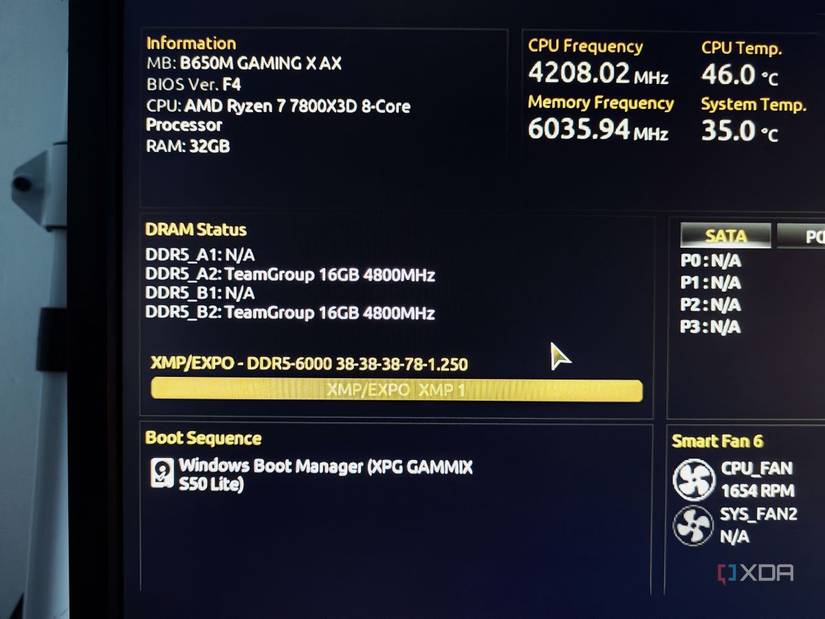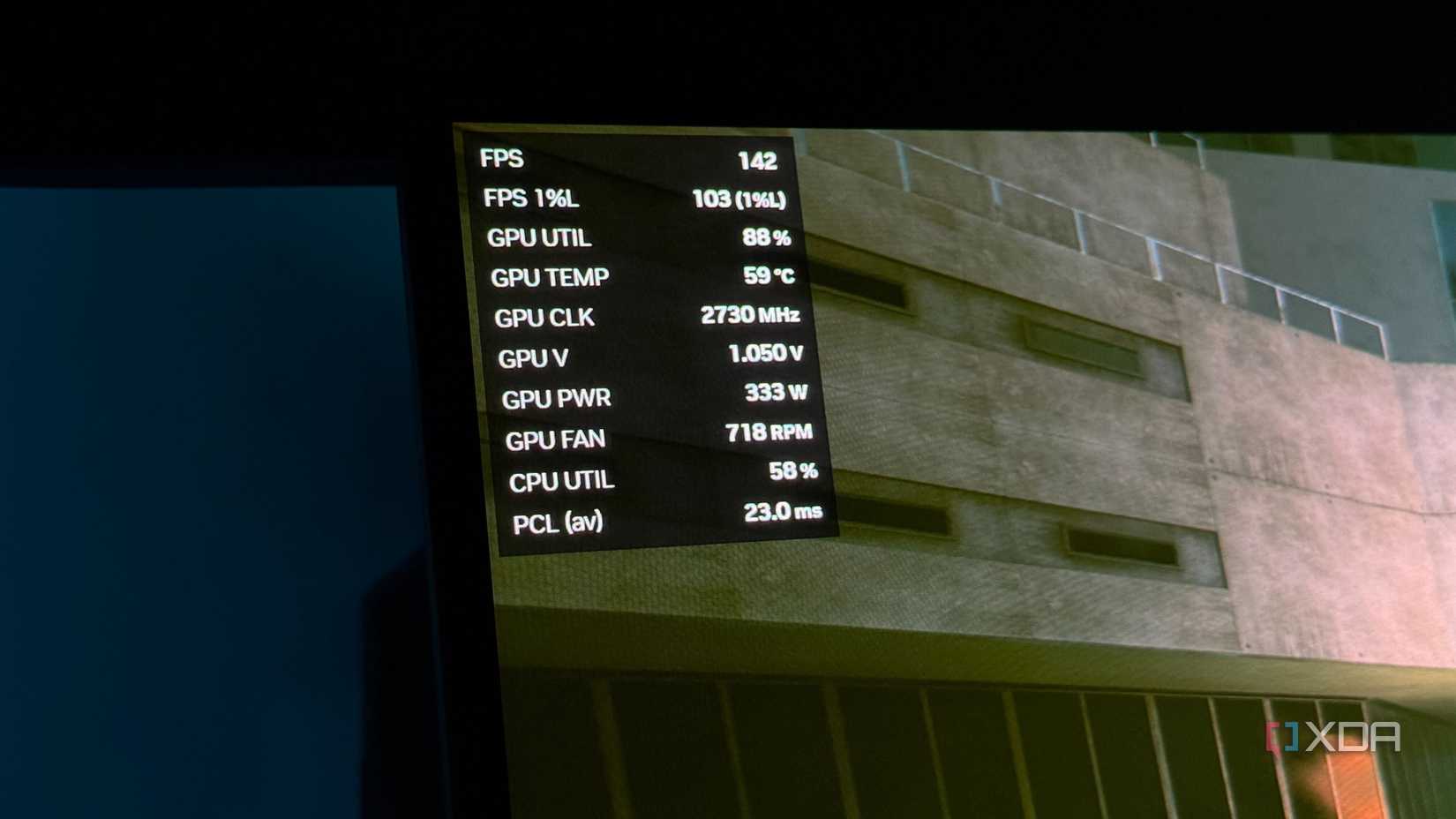When we think about XMP or EXPO profiles, the first thing that usually comes to mind is faster RAM speeds. After all, that's the main selling point and the easiest metric to measure. When I first got into PC gaming, I used to focus solely on speeds, but soon enough, I learned that these profiles do a lot more than make your RAM run at higher frequencies. They actually brought practical improvements that made my PC more stable, efficient, and enjoyable, not just for gaming but for day-to-day tasks as well.
For starters, enabling an XMP or EXPO profile applies the rated timings and voltages for which the RAM kit was specifically tested by its manufacturer to run at. Without these profiles, your RAM would be limited to standard JEDEC profiles, which are conservative at best. Sure, that might keep your system running safely, but it also means you're settling for the bare minimum. And once again, I'm not just talking about MT/s. There are other advantages that deserve attention, and those are what I want to dig into.
Tighter RAM timings
Optimized timings make your system feel more responsive in daily use

0.One of the first things I noticed after enabling the XMP profile for my RAM was how much more responsive my system felt compared to running on default JEDEC settings. While the higher frequency surely plays a big role here, most people tend to overlook the optimized timings to match the rated speed. What really matters is how timings and frequency work together, since both directly affect real-world latency, and that balance is what determines how quickly your CPU can access data stored in RAM.
For instance, my Trident Z Neo DDR4 kit is rated for 3600 MT/s at CL16, but without XMP (DOCP), it falls back to the JEDEC baseline of 2133 MT/s at CL15. At first glance, CL15 looks tighter than CL16, but once you factor in the slower frequency, the actual latency works out to be about 14 nanoseconds for 2133 MT/s CL15 and around nine nanoseconds for 3600 MT/s CL16. This latency reduction is exactly what makes my PC feel more responsive. From opening large files in Photoshop or Premiere Pro to switching between multiple browser tabs and juggling multiple apps, most day-to-day tasks feel noticeably snappier with XMP enabled.
Manufacturer-tested stability
XMP and EXPO profiles save hours of trial and error from manual tuning
I know some of our readers like to manually tune their RAM to squeeze out every last bit of performance. While I do respect that approach, it's not really my cup of tea. One, I don't have the time or patience to spend hours digging through BIOS settings and rerunning stress tests just to find a stable configuration. Even if I did, I'd still be second-guessing whether my PC would remain stable during extended gaming sessions or demanding workloads.
That's exactly why I prefer enabling the XMP or EXPO profile instead. Within seconds, I can head to the BIOS and apply manufacturer-tested settings for my RAM without worrying about stability issues, especially when the kit is listed on my motherboard's QVL for guaranteed compatibility. Sure, you can still encounter stability issues if you fill out all four DIMM slots or mix different kits, since that puts more strain on the CPU's memory controller. But as long as you avoid that, you can be confident that your RAM will run at its rated specs.
Smoother frame pacing while gaming
XMP and EXPO profiles improve 1% and 0.1% low FPS in games

When you enable XMP or EXPO and let your RAM run at its rated speed, you typically expect higher average frame rates while gaming. But that's not the only benefit of using these profiles. What often goes under the radar is how much they improve frame pacing, particularly the 1% and 0.1% lows in CPU-bound games. These lows represent the dips and stutters you actually see on screen, which break immersion, and they're often more noticeable than a small bump in average FPS.
At JEDEC speeds on my Trident Z Neo (DDR4), the average FPS was definitely a lot lower in games like Fortnite and Call of Duty: Warzone, but it wasn't terrible enough to be unplayable. However, during intense gunfights in crowded areas, I experienced stutters that immediately put me at a disadvantage. After enabling the DOCP (XMP) profile and letting my RAM run at its rated 3600 MT/s CL16, my frame rates were far more consistent, no matter the scene. That consistency is what makes the overall gameplay feel fluid, and it's why I value 1% and 0.1% lows just as much as the average frame rate.
Convenience and peace of mind make XMP/EXPO worth it
There's no doubt that it's nice to see your RAM run at its rated speed, but honestly, I wouldn't call it the biggest advantage of XMP and EXPO profiles. If chasing the highest MT/s was all that mattered, people would spend hours manually tuning their RAM kits. What really makes these profiles stand out is how they give you that extra performance without the stress or uncertainty of trial and error. And more importantly, you don't have to worry about running into stability issues unless you mix kits or fill all your slots. Even those who're completely new to PC building will have no trouble enabling XMP or EXPO to get optimal performance, and that simplicity is something we shouldn't just take for granted.
.png)











 English (US) ·
English (US) ·